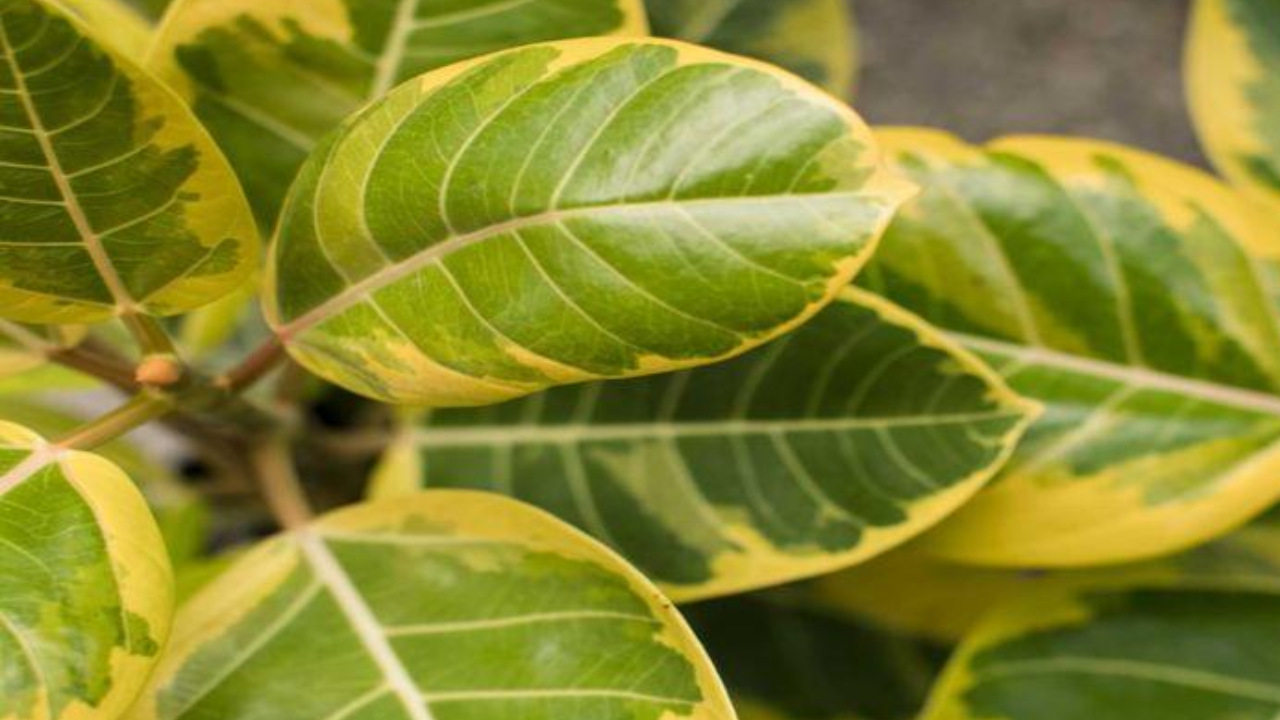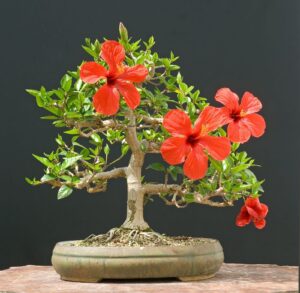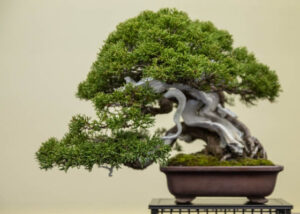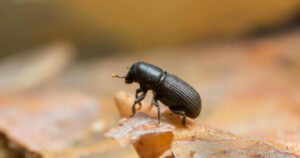Are your Ficus bonsai leaves turning yellow?
Well, there are several reasons why this could be happening. Poor placement of the tree, underwatering, overwatering, insufficient sunlight and pests may all be causing your ficus bonsai leaves to turn yellow.
However, the good news is that you can usually reverse yellow leaves on Ficus bonsai trees.
So, what are the most common reasons for bonsai Ficus leaves turning yellow? Is there a way to counteract this? Read on to find out why your Ficus leaves are turning yellow!
Ficus Bonsai Leaves Turning Yellow
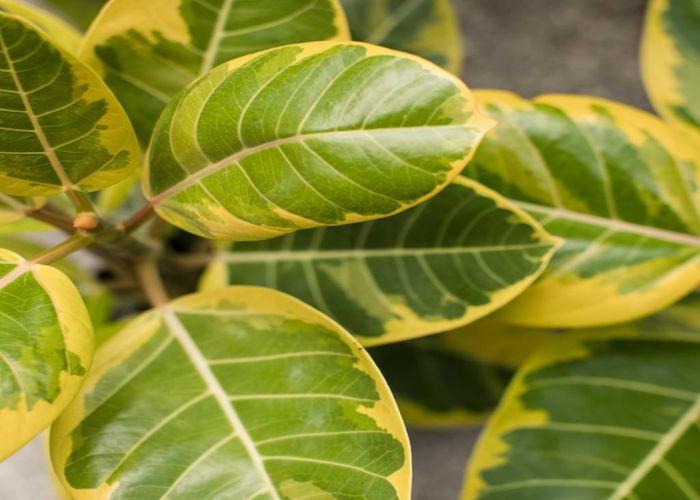
Underwatering of the Plant
Underwatering is the most common cause of yellowing in Ficus trees. Normally, Ficus bonsai trees are grown in tropical rainforests filled with humidity. Since most of us keep these trees indoors, it is common for them to dry out.
Check your topsoil regularly to see if it needs watering. Whenever the topsoil is dry to the touch, water your Ficus. In the late spring or summer, when your tree is more likely to dry out, touch the topsoil several times per day. Also, wait until the top 1 inch of soil is completely dry before watering.
Yet, if you are growing bonsai trees such as Ginseng Ficus, then you might need to touch your topsoil more often. The best way to overcome this is to keep a daily schedule in which you touch the topsoil to see if it needs watering.
If you have neglected to water your tree for too long, you can water it from the bottom. Do this by submerging its base in water for 30 minutes, where your roots can directly reach the water.
Overwatering of the Plant
While underwatering is the most common cause of yellowing leaves, overwatering can also cause yellowing of the ficus bonsai leaves.
Moreover, most of us who keep Ficus live in temperate, mild climates rather than tropical ones. As a result, we tend to overcompensate by giving our Ficus too much water. However, it will only result in waterlogging of the soil as well as other issues such as root rot.
Therefore, water your tree only if the topsoil is dry. Also, ensure that you touch the topsoil on a regular basis.
You can overcome overwatering your Ficus by doing the following:
- By planting your Ficus in the ground, excess water will be absorbed by the soil
- Dry out the roots using a hairdryer. This will prevent root rot.
- Make sure the tree is kept at a warm temperature.
Improper Watering Technique
Can you guess what’s more heart-breaking? Even if you water your Ficus tree properly, you can still have yellowing leaves due to improper watering methods.
Inconsistent watering causes your Ficus stress and leads to yellowing leaves. Incorrect temperature of your water can also lead to yellowing leaves.
Moreover, it can cause a shock to the roots and leaves of your tree if the water is too cold. Watering your Ficus too much with tap water can change the PH level of your soil. Thus, it causes the yellowing of your tree’s leaves.
Additionally, seasons should also be considered. It is more likely that your tree’s leaves and branches will form ice during the winter. Due to this, you will not need to water your Ficus as frequently since the frost and ice will keep it moist.
To prevent Ficus bonsai leaves from turning yellow, how much water should you give?
Now that you have read the above three points, you might be wondering how much water to give your Ficus bonsai.
Take a look at these tips
- During the spring, summer, and fall, water your Ficus twice or thrice times a week.
- In the winter, water your Ficus once a week.
- For best results, use neutral water or rainwater and only water when the topsoil is dry.
Change in the Environment
Consistency is important to a Ficus bonsai tree.
Here, consistency means consistent watering, temperature, sunlight, and everything else. A simple movement of a Ficus, a change in the room it’s in, or bringing it back from a store can cause little changes in sunlight and the general environment.
As a result of these changes, your Ficus tree will become yellow as the leaves become stressed. The best way to avoid this is to keep it in one solid location that does not need much movement.
I recommend investing in a greenhouse. Alternatively, keep your Ficus indoors on a bench or on a window sill that does not move much. If your tree is stressed from moving, yellowing leaves should have stopped within a week.
Also, before purchasing your Ficus, consider where you will store it and will that location be suitable for your plant.
Temperature Change
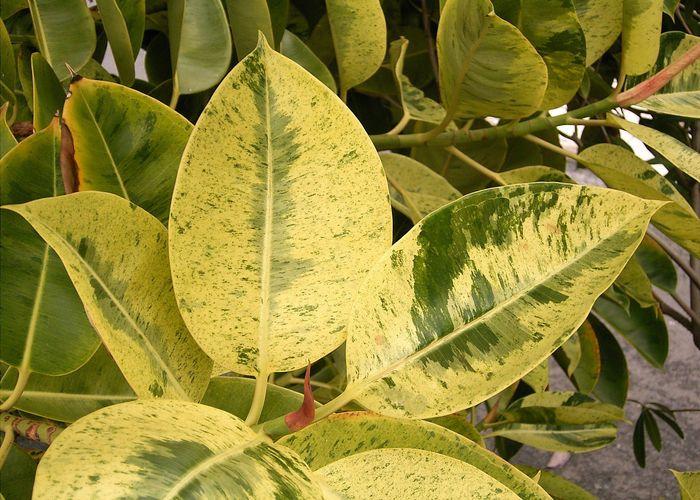
A change of location will affect your Ficus’ temperature inconsistently.
For example, let’s say you keep your Ficus indoors, and you live in a mild climate. You will have no problem managing the indoor temperature during spring and summer. However, as the house cools down in the fall and winter, your tree will shed its leaves.
Additionally, if you use things like central heating during the winter, your Ficus will go from freezing at night to boiling during the daytime when the heating is on.
In order to prevent this, it is crucial to regulate and maintain a consistent temperature. For Ficus, temperatures above 15 – 24 degrees Celcius are ideal.
Dry Soil
In order to create good potting soil for Ficus, three things must be present:
- Moisture retention
- Moisture flow
- Good aeration
If any one of these three key elements is missing, your Ficus will not thrive.
Most good potting soils such as Peat soil or Cactus soil will not have these in abundance.
However, if your soil mix does not have good moisture retention and too much moisture flow, your soil can become dry.
Your Ficus will have trouble absorbing nutrients from the soil if you have dry soil. As a result, the tree will be dehydrated and its leaves will turn yellow and eventually fall off. In order to avoid this, ensure your soil mix contains the elements necessary for healthy soil.
You can also prevent dry soil by checking your topsoil every day. Moreover, invest in a pot with the right amount of drainage holes and not too many as all the water may run out.
You can refer to the below chart to get a better idea:
| Size Classification | Size inches | Number of penny-sized holes | Number of pencil-sized holes |
| Keshitsubo | 1-3 inches | 1-2 | 0 |
| Shito | 2-4 inches | 1-2 | 0 |
| Mame | 2-6 inches | 2 | 2 |
| Chohin | 5-8 inches | 2 | 2 |
| Kumono | 6-10 inches | 2 | 2 |
| Katade-mochi | 10-18 inches | 2 | 3 |
| Chiu or Chumono | 16-36 inches | 2 | 4 |
| Dai or Omono | 30-48 inches | 3 | 6 |
| Hachi-uye | 40- 60 inches | 4 | 8 |
| Imperial | 60-80 inches | 6 | 8 |
Insufficient Sunlight
The lack of sunlight is another major reason why your Ficus bonsai leaves are turning yellow. To thrive, Ficus trees need a minimum of 4-6 hours of sunlight per day. Sadly, many people keep Ficus indoors, away from windows where they receive this amount of direct light.
If you do not provide enough sunlight, Ficus will not be able to feed itself through photosynthesis. Hence, make sure your bonsai Ficus gets as much sunlight as possible.
However, those who live in a place without much sunlight can consider investing in artificial grow lights.
Using the wrong Fertilizer
It is crucial to fertilize Ficus trees regularly. However, it is important to note, that excessive fertilization can build up a large amount of salt in the soil. Hence, avoid fertilizing more than once per week,
Also, if you water your Ficus too much, your soil’s PH level will change. Similarly, if you apply too much fertilizer, the Ficus trunk and roots will burn. As a result, your Ficus leaves will turn yellow and eventually fall off.
If you want to prevent this from happening, fertilize your Ficus only during the spring and summer. However, no more than twice a month. Use only natural fertilizers with a balanced NPK ratio to avoid burning.
Dry Air
Dry air is another cause of yellowing leaves. Even though we often think a draft of air will cool our trees, the truth is that a light breeze of dry air can dehydrate them. Again, this will cause underwatering, which will result in yellowing leaves.
Keeping your tree inside might not seem like a problem at first, but you are wrong. This can occur even if you keep a window open next to your Ficus. Moreover, it can occur if the air conditioner is on, or if you enter and exit the room frequently.
To avoid this from happening, keep the windows closed and keep your ficus away from drafty areas.
Repotting your tree
In any case, Ficus grows, whether you use it for bonsai or just keep it around the house. Eventually, repotting your tree will be necessary to maintain its roots.
However, repotting your tree can be one of the most stressful activities. During times of stress, your trees’ leaves may turn yellow.
You may see yellow leaves if you have recently remitted your tree. As a preventative measure, check your tree daily for a few days after repotting. Also, ensure you are maintaining good aftercare.
Generally, Ficus plants require repotting every 2-3 years. However, bonsai Ficus can be repotted much less frequently since they grow much slower.
Pests
It is common for your bonsai Ficus leaves to turn yellow if it is in poor health. Several pests love to nest under Ficus canopies, including aphids, scales, and spider mites.
Due to the fact that they feed on the leaves, this can cause a lot of stress to the plant. Particularly if your Ficus produces figs/berries or seeds that attract pests. This will cause the leaves to turn yellow.
Thus, consider investing in a pesticide to prevent these bugs from attacking your tree. There are two ways to do this: naturally, by using predatory wasps and ladybugs. And chemically, by using soapy water or neem oil.
Fungus
Your Ficus can also suffer from fungal and mold infections, often caused by overwatering. Additionally, trees with fungal infections often have yellow spots on their leaves. However, by using a good fungicide you can avoid this.
Tree Age
Last but not least, the age of your Ficus bonsai tree can also affect its yellowing. Because photosynthesis becomes less efficient as a tree ages. As a result, your older trees may begin to yellow and drop their leaves.
Conclusion
There are several reasons why your Ficus bonsai leaves are turning yellow. However, if you provide the finicky Ficus with what it wants, it will minimize yellowing and leaves dropping.
Further, if you can identify the problem early, you can fix it. By doing so, your Ficus leaves will return to their bright green color.
Feel free to comment below if you have any questions
Related Articles
- Top 10 Bonsai Tree for Sale in India
- Unique Bonsai Gifts: Perfect for the Plant Enthusiast
- Bonsai Tree in a Terrarium – An Ultimate Guide To Build Bonsai Terrarium.
- Redwood Bonsai Care Guide: How to Grow, and Bonsai For Sale
- Growing Kale Indoor From Seeds With LED Grow Light
- Best Bonsai Plants to Grow in Summer
